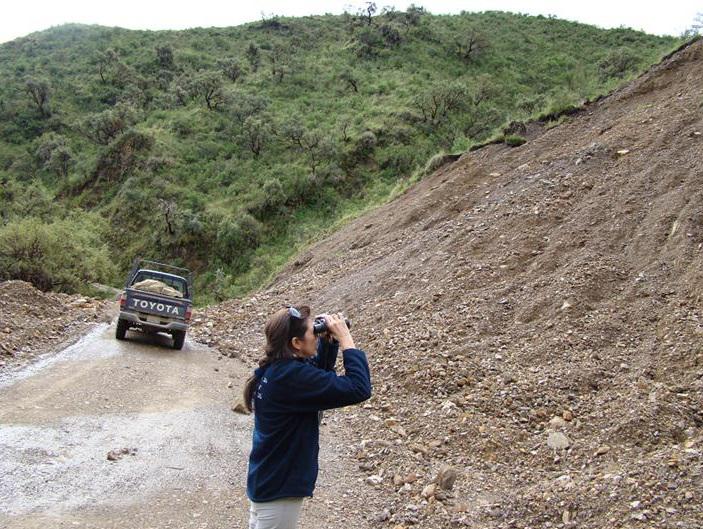José Antonio Balderrama Torrico
To carry out research to estimate population size, to take actions promoting conservation of Cochabamba Mountain-Finch and encourage local people to take a leading role in this project.

In this big landslide, rocks were still falling.
We will carry out an evaluation of a population of the endangered Cochabamba Mountain-Finch (Poospiza garleppi) and of other restricted-range bird species in Kewiña (Polylepis neglecta) woodland in Llallahuani (Potosí-Bolivia) and develop a local conservation program for these woodlands. We will train and work with local people and local government through meetings, workshops and the distribution of outreach material towards a rational and sustainable land-use management. Environmental education will be provided in schools to teachers and students.
Once we have obtained data on the population of P. garleppi and on those of other bird species important for conservation, we will propose Llallahuani to be an Important Bird Area to contribute to the conservation of the Polylepis forest fragments. We will further encourage local people to create a Communal Protected Area. For this goal we will work with the local government and the environment office of the departmental government of Potosi, to establish regulations to control use by individuals within the community to prevent overexploitation of the forest. Thus, we will work towards ensuring the protection of P. garleppi and to reduce the pressure on this habitats by introducing sustainable management of Polylepis neglecta forest and environmental education in Llallahuani.
This Project will last 10 months, developed in two parts: (1) Field research and (2) Environmental education:
1. Mapping Polylepis neglecta fragments by recording geographic points along the perimeters of forest patches (1st month);
2. Collect detailed data on habitat variables of Polylepis woodlands (vegetation structure, patch size, isolation, etc.) for later correlation with P. garleppi abundance estimates to determine the most important habitat requirements. This will be conducted in sample plots inside the forest (2th-6th months);
3. Estimate the relative abundance of P. garleppi in each Polylepis fragment through line transect surveys (2nd-6th months);
4. Determine land use types throughout the study areas and in the forest patches in particular through direct observations in the field and interviews with local people in order to develop a zonification of P. neglecta patches (7th month);
5. Establish an environmental education programme directed at local people through community workshops and meetings with local authorities. We will elaborate posters and environmental education materials directed at adults, children and teachers of the area, plus, training in strategies for restoration plans of the forest in this locality (8th- 9th month). Encourage local people and governments to establish a Communal Protected Area (1st -10th month).